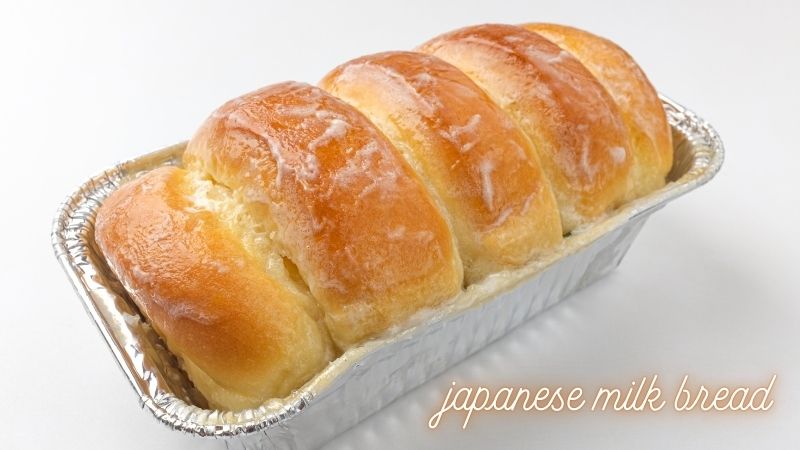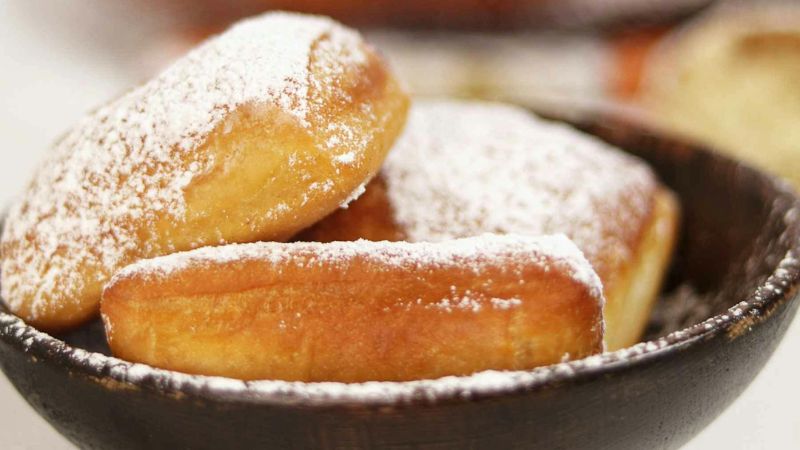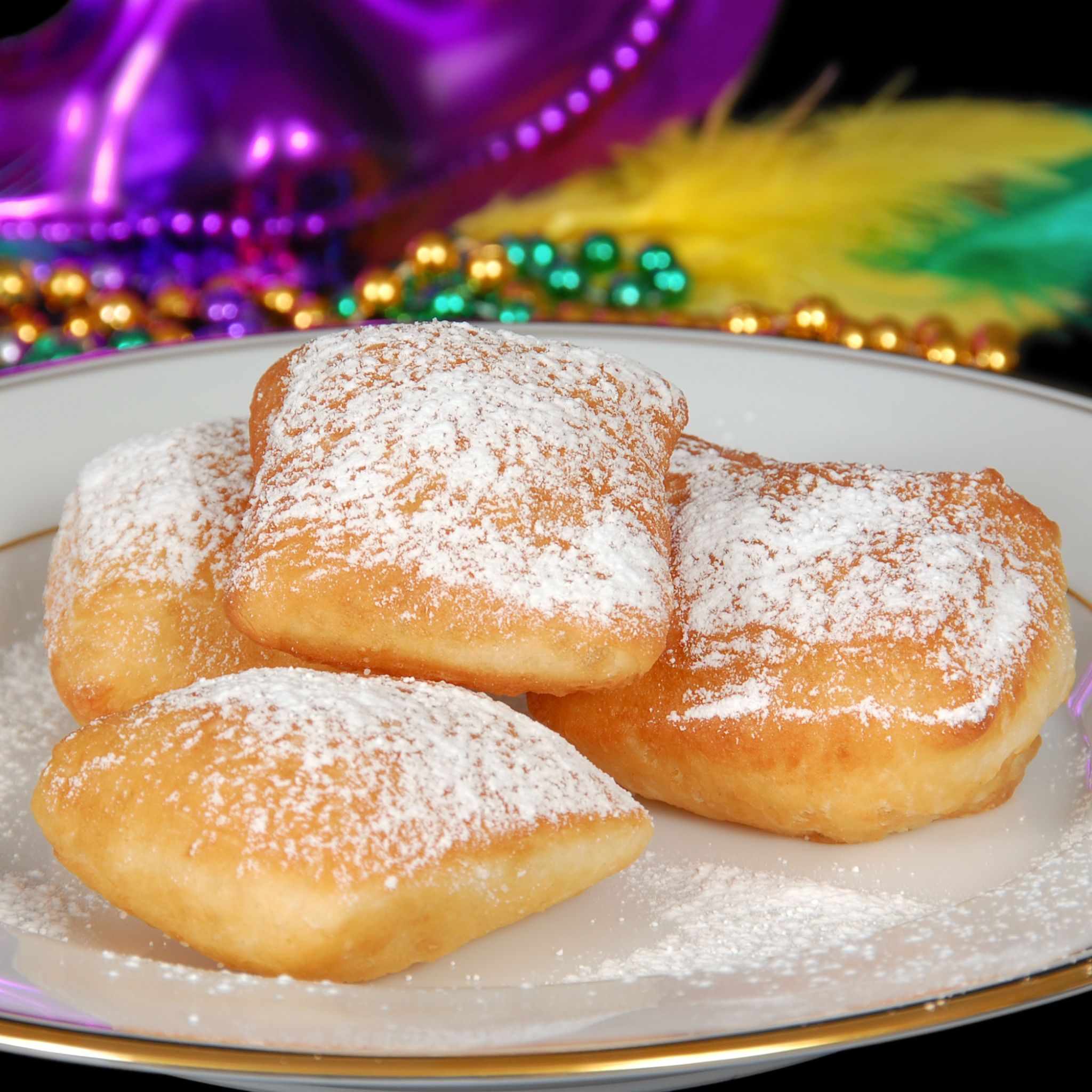New Orleans is renowned for its vibrant culture, rich history, and delectable cuisine. Among its many culinary treasures, beignets stand out as a quintessential treat, offering a sweet taste of the city’s French heritage. Whether enjoyed in the heart of the French Quarter or made fresh at home, a perfect beignet should be pillowy-soft, airy, and melt-in-your-mouth delicious, and never dense, tough, or chewy.
a brief history of beignets
Beignets (pronounced ben-yay) trace their origins to France, where similar fried pastries have existed for centuries. French settlers brought the concept to Louisiana in the 18th century, and over time, New Orleans-style beignets developed their own unique identity. Unlike traditional French beignets, the ones found in New Orleans are typically square, fluffier, and always served with a generous dusting of powdered sugar.

the iconic café du monde
No discussion of New Orleans beignets is complete without mentioning Café du Monde. Established in 1862 in the French Market, this iconic coffee stand has been serving its signature beignets and chicory coffee for over a century. The café’s version has set the standard for what many expect from a perfect beignet: light, airy, and crisp on the outside. The café’s enduring popularity has made it a must-visit destination for both locals and tourists seeking an authentic beignet experience, paired, bien sûr, with café au lait!
the science behind perfect beignets
While beignets seem simple (just fried dough with powdered sugar, right?), getting them right at home can be surprisingly tricky. Many homemade versions turn out too dense, too chewy, or go stale within hours. To counteract those common pitfalls, I’ve pulled out all the stops in this recipe — using tangzhong as well as yeast and baking powder and adding buttermilk powder and dough enhancer — to ensure beignets that are fluffy, tender, and last long enough for you to enjoy every last one!

why use tangzhong in beignets?
Tangzhong is a cooked flour-and-liquid paste (a roux of sorts) that is commonly used in Asian milk bread recipes for a softer, longer-lasting result. While it’s definitely not traditional for French pastries, it solves two of the biggest problems with homemade beignets.
- prevents excess chewiness: Many homemade beignets end up with a dense, tough chew instead of a light, delicate texture. Tangzhong helps lock in moistures and create a more tender crumb.
- keeps them soft for longer: If you’ve ever made beignets, you know they stale incredibly fast, often within just a few hours. Because the tangzhong helps the dough retain moisture without becoming greasy, they become stale much more slowly, leading to light and airy treats that last much longer than their traditional counterparts.
why use both yeast and baking powder?
Traditional New Orleans style beignets rely on yeast for leavening, but I also use baking powder (via the self-rising flour). This dual approach ensures the best of both worlds.
- yeast develops flavor and structure. Given time, yeast ferments the dough, contributing a deeper, richer taste.
- baking powder provides extra lift. When the beignets hit the hot oil, the baking powder activates immediately, helping create that light, airy texture.

why add buttermilk powder (or buttermilk)?
Buttermilk powder is a secret weapon that enhances beignets in multiple ways.
- adds a subtle tang and depth of flavor. This mimics the complexity of doughs made with fermented dairy.
- improves tenderness. Buttermilk’s acidity helps keep the dough soft and prevents toughness.
Note: You can absolutely use normal, liquid buttermilk… I just have the powder reliably on hand, so that’s what I reach for! 2 tbsp. of buttermilk powder = 1/8 cup (4 tbsp.) liquid buttermilk.
why use dough enhancer?
Finally, I incorporate a dough enhancer (I use Zetov brand, which you can find on Amazon) to fine-tune the texture and shelf-life of these beignets.
Dough enhancers often contain:
- vital wheat gluten for improved elasticity and structure
- enzymes that help break down starches, leading to a softer texture
- acidic ingredients that strengthen the dough and improves leavening
While not essential, dough enhancer takes these beignets from great to bakery-level perfection.

final thoughts
Perfecting homemade beignets is all about mastering texture. By using tangzhong, yeast + baking powder, buttermilk powder, and a dough enhancer, this recipe ensures beignets that are
❤️ ultra light and fluffy
❤️ tender, with just the right “bite”
❤️ less prone to going stale too quickly
This is as close to the iconic New Orleans experience as possible — without the plane ticket!
So grab some powdered sugar, brew some coffee, and get ready to enjoy the best homemade beignets you’ve ever had!
new orleans beignets
Ingredients
for the tangzhong
- 3 tbsp. water
- 3 tbsp. whole milk
- 2 tbsp. all-purpose flour
for the dough
- 3/4 cup whole milk
- 1 egg
- 1 tsp. vanilla extract
- 1/2 cup granulated sugar
- 3 1/2 cups self-rising flour
- 2 tbsp. buttermilk powder
- 1 pkt. dough enhancer (optional)
- 1 1/2 tsp. instant yeast
- 3 tbsp. butter, softened
for frying + topping
- oil for frying (neutral, like peanut or canola)
- powdered sugar (for dusting)
Instructions
make the tangzhong
- In a small saucepan, whisk together water, milk, and flour over medium heat.
- Stir constantly until the mixture thickens to a pudding-like consistency and is starting to bubble (1-2 minutes).
- Remove from heat; place in large mixing bowl.
make the dough
- Whisk 3/4 cup of whole milk into the hot tangzhong until completely smooth and cooled to room temperature or a little above.
- Add the egg, vanilla extract, and sugar, whisking until smooth again.
- In a separate bowl, combine self-rising flour, buttermilk powder, dough enhancer (if using), and yeast. Toss to combine thoroughly.
- Stir 1/3 of the flour mixture into the wet ingredients. Add 1 tbsp. of the softened butter and begin kneading it into the dough. Alternate the remaining 2/3 of the flour mixture with the remaining 2 tbsp. of softened butter, kneading after each addition.
- Continue kneading until the dough is smooth, elastic, and slightly tacky (but not sticky), about 8-10 minutes by hand or 5-7 minutes in a stand mixer.
- Transfer dough into a bowl rubbed with butter or oil; flip the dough over a time or two so that the top surface is oiled as well as the bottom.
- Cover the dough and let rise until doubled, about an hour.
roll + cut
- Line a baking sheet with parchment paper and set aside.
- Turn dough out onto a floured surface and knead briefly, then roll out to a 1/2-inch thickness.
- Cut rolled dough into 2-inch squares (or whatever shape your heart desires!)
- Place dough pieces on the parchment paper-lined sheet pan; cover loosely and let rest for 20-30 minutes until puffed but not quite doubled in size.
fry the beignets
- Heat oil to 375°F (190°C).
- Fry in batches, flipping once, until golden brown, about a minute per side. Try to make sure the oil is back up to at least 350°F after removing the first batch before adding the second batch.
- Remove beignets with a spider strainer and place on a rack set over a baking sheet or, in a pinch, on a paper-towel lined plate.
- Dust or toss with powdered sugar while still warm and serve immediately.



Leave a Reply